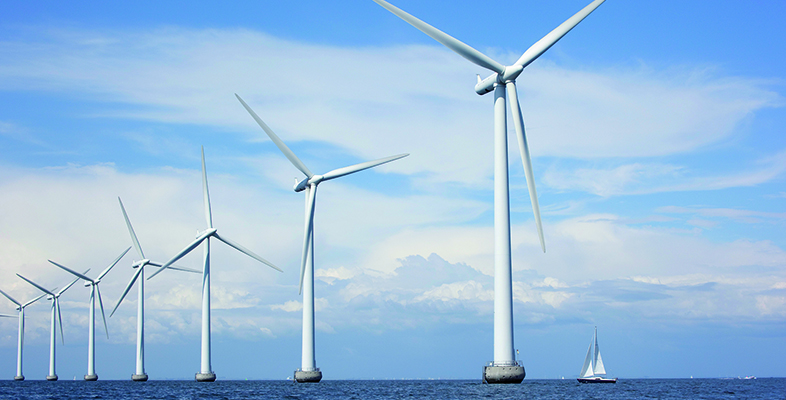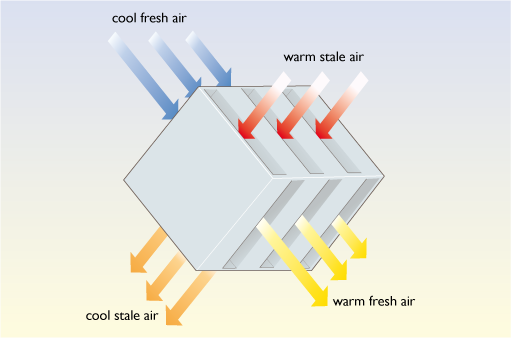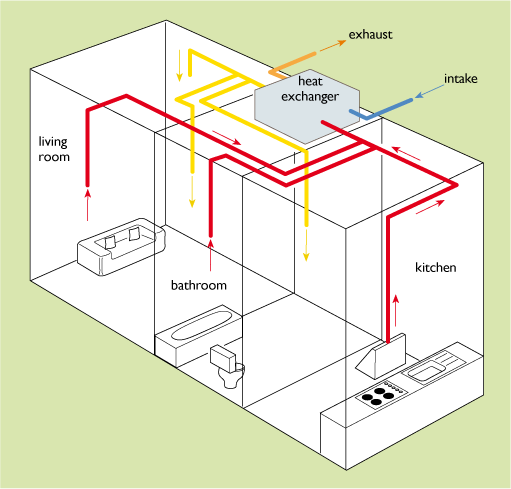2.3.2 Ventilation heat recovery
Many office buildings use mechanical ventilation driven by electric fans. One way of reducing ventilation heat loss is to use mechanical ventilation with heat recovery (MVHR), which involves allowing warm outgoing air to preheat cold incoming air. This can be done by passing both air streams through a heat exchanger (see Figure 19), consisting of multiple layers of thin, flat, metal or plastic plates with incoming and outgoing air passing through alternate layers. This gives a large area through which heat can flow. Obviously such a system can be used only if the inlet and outlet ducts are adjacent to each other.
MVHR is a mixed blessing. On the one hand it gives controllable ventilation adjustable to almost every room. On the other it requires complex ductwork and air pumping, which can consume considerable amounts of electricity.
MVHR systems are available for domestic applications (see Figure 20) but it is essential that they are installed in buildings that are airtight to start with, otherwise any attempt to pump air around the system may just increase the flow of air through unwanted air infiltration paths. However, once the fabric heat losses of a building have been tackled with thick insulation and high-performance windows, this may be the only satisfactory way to deal with the remaining major heat loss, that from ventilation.
Activity 8
What is the difference between ventilation and infiltration?
Answer
Ventilation is air movement that is considered essential and may be deliberately encouraged by opening windows or using mechanical ventilation. Infiltration is uncontrolled air movement through various cracks in the building fabric or through air paths such as chimneys.
Activity 9
A small 19th century terraced house has a volume of 240 m3, an air change rate of 2 ACH and an inside–outside temperature difference, ΔT of 20 K. What is its ventilation heat loss rate in kilowatts?
Answer
Using the equation given above:
- Qv = 0.33 × n × V × ΔT watts
and taking n = 2 ACH, V = 240 m3 and ΔT = 20 K
- Qv = 0.33 × 2 × 240 × 20 watts = 3.17 kW
(i.e. rather a lot).


